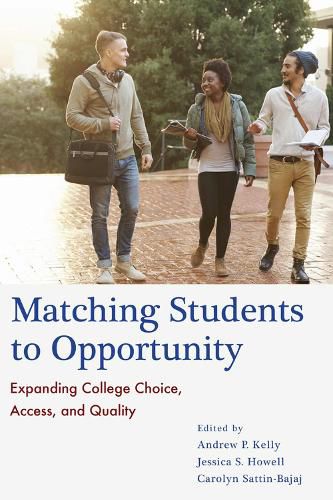Readings Newsletter
Become a Readings Member to make your shopping experience even easier.
Sign in or sign up for free!
You’re not far away from qualifying for FREE standard shipping within Australia
You’ve qualified for FREE standard shipping within Australia
The cart is loading…






Matching Students to Opportunity expands on the discussion of a critical issue in college access and success: the match between prospective students and the colleges in which they enroll. Research indicates that ensuring a good match significantly increases a student’s chance of graduating.
The contributors to this volume argue that the discussion of college match must be broadened to include students at all levels of achievement - not just the most academically qualified - and must take into consideration dimensions other than academic selectivity, such as geography and price. Drawing on original empirical research, they examine the preferences that shape students’ choices and assess their importance in ensuring students’ success. They look at institutional practices that contribute to the problem of undermatching, and ask how local, state, and federal policy can help change both the demand and supply sides of the college match equation.
Written with policy makers, researchers, and higher education professionals in mind, Matching Students to Opportunity advances the current conversation on college access, match, and completion, and offers a valuable addition to public policy discussions on this timely and urgent topic.
$9.00 standard shipping within Australia
FREE standard shipping within Australia for orders over $100.00
Express & International shipping calculated at checkout
Matching Students to Opportunity expands on the discussion of a critical issue in college access and success: the match between prospective students and the colleges in which they enroll. Research indicates that ensuring a good match significantly increases a student’s chance of graduating.
The contributors to this volume argue that the discussion of college match must be broadened to include students at all levels of achievement - not just the most academically qualified - and must take into consideration dimensions other than academic selectivity, such as geography and price. Drawing on original empirical research, they examine the preferences that shape students’ choices and assess their importance in ensuring students’ success. They look at institutional practices that contribute to the problem of undermatching, and ask how local, state, and federal policy can help change both the demand and supply sides of the college match equation.
Written with policy makers, researchers, and higher education professionals in mind, Matching Students to Opportunity advances the current conversation on college access, match, and completion, and offers a valuable addition to public policy discussions on this timely and urgent topic.